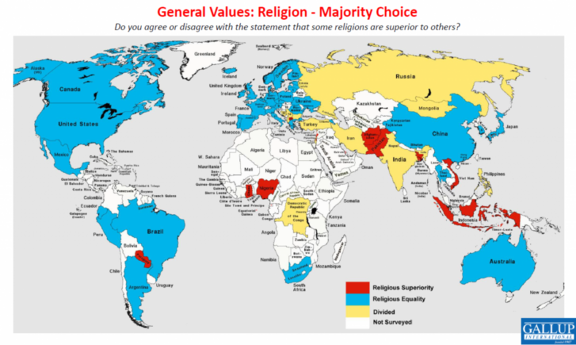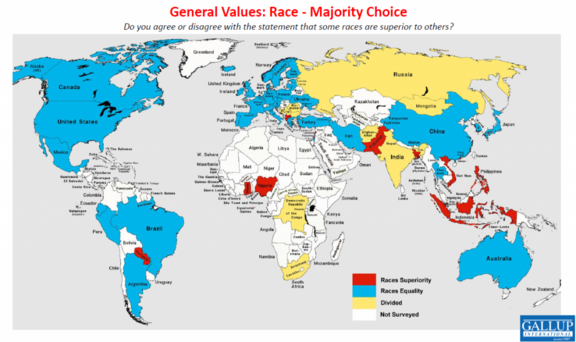Religious, Cultural and Racial Superiority
The majority of the people and the majority of 66 nations surveyed by Gallup International Association believe that there is no religious, cultural or racial superiority. Nevertheless, in significant number of countries the public opinion on that issue is divided. In 10 countries, there is a majority which believes that there is religious, cultural and racial superiority altogether.
The key purpose of the survey question is not measure racism on its own, neither the filings of cultural and religious superiority. The main interest is to reflect on the internal national balances. It is evident that all those countries which feel stable and not threatened show low levels of religious, cultural or racial superiority. And vice versa.
The main factors which stimulate massively spread feelings of superiority in those three fields most probably are:
- sharp internal conflicts and problems
- sharp external instability and expectation of outside intervention
- deep transformation of the society leading to mass feelings of insecurity
Kancho Stoychev, President of Gallup International Association:
“Overall the global tolerance towards racial, religious and cultural differences is a dominating norm. Exceptions from this norm are occurring in countries, nations or regions with serious internal or external conflicts. The countries in which we register a seriously split public opinion on the issues (divided countries), this is most probably an indicator of deep transformational processes in their societies going on.”
Methodology
The End of Year Survey is an annual tradition initiated by and designed under the chairmanship of Dr. George Gallup in 1977. It is conducted every year since then. This year it was carried out by the Gallup International Association in 69 countries around the world.
A total of 66541 people were interviewed globally. In each country a representative sample of around 1000 men and women was interviewed either face to face (25 countries; n=29211), via telephone (13 countries; n=10754), online (25 countries; n=23947) or through mixed methods (3 countries; n=2629). The field work was conducted during October – December 2016. The margin of error for the survey is between +/-3-5% at 95% confidence level.


